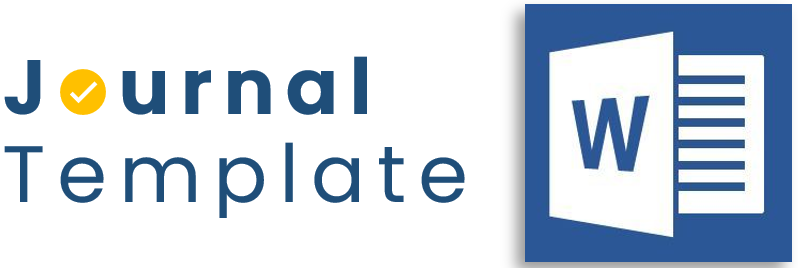Gambaran Perubahan Hemodinamika Pada Pasien General Anestesi Menggunakan Isoflurane dan Sevaloflurane Di RS X Palembang
Keywords:
Isoflurane; Sevoflurane; General AnesthesiaAbstract
It is very important to monitor hemodynamics, especially during general anesthesia because generally anesthesia will cause various kinds of disturbances to body systems and organs. The use of inhalation anesthesia using isoflurane and cefoflurane can cause the effect of lowering blood pressure so strict monitoring is required in its use. The aim of this study was to determine the description of hemodynamic changes in general anesthesia patients using isoflurane and sevoflurane at RS X Palembang. The research design used is non-experimental quantitative research using descriptive methods. The population in this study was 191 patients who underwent surgery using isoflurane and sevoflurane inhalation anesthesia, with a sample size of 62. The data analysis used in this study was univariate analysis. The results of previous hemodynamic observations of patients were the average systolic blood pressure before anesthesia was given, namely 135.5 mmHg, the average diastolic blood pressure was 81.0 mmHg, the average pulse was 82.7, the average temperature was 36.6, the average respiration was 21.0 and the results The patient's hemodynamic observations afterwards were an average systolic blood pressure of 108.8 mmHg. The average diastolic blood pressure was 68.4 mmHg. The average pulse is 67.1. The average temperature after anesthesia was given was 36.3 and the average respiration was 21.0. The conclusion of this study is that there were hemodynamic changes in patients before and after general anesthesia using isoflurane and sevoflurane at RS X Palembang
Downloads
References
Brunton, (2011). Goodman & Gilman's The Pharmacological Basis of Therapeutics 12 th Edition. Mc Graw Hill : ISBN 978-0-07-176939-6 (Ebook) Erniody. 2012. Pemantauan Hemodinamik Invasif, Kurang Invasif, atau Tidak Invasif: Jurnal Anestesiologi Volume 2 No 2. Jakarta: Departemen Anestesiologi dan Reanimasi RS Husada.
Fatimah.(2012).Efek anestesi inhalasi isoflurane dan sevoflurane terhadap perubahan nadi. UNS. Surakarta.
Kasenda.(2014). Perbandingan Denyut Nadi Antara Penduduk Yang Tinggal Di Dataran Tinggi Dan Dataran Rendah. Jurnal e-Biomedik (eBM)
Latief.(2014). Petunjuk Praktis Anestesiologi. edisi 4. Jakarta: Bagian Anestesiologi dan Terapi Intensif Fakultas Kedokteran Universitas Indonesia : Jakarta
LeMone & Burke (2015). Keperawatan Medikal Bedah, Alih bahasa. Jakarta: EGC
Mangku, G dan Senapathi, T. G. A. (2010). Ilmu Anestesia dan Reanimasi. Jakarta: PT. Indeks.
Morgan. 2013.Clinical anesthesiology.New York: Lange Medical Books/McGraw Hill Medical Pub
Notoatmodjo. (2012). Metodologi Penelitian Kesehatan. Jakarta : PT Rineka Cipta
Potter & Perry.(2012). Buku Ajar Fundamental Keperawatan. Alih bahasa.Jakarta: EGC
Pramono. (2015). Buku Kuliah Anestesi. Jakarta: EGC Sjamsuhidayat, (2012). Buku Ajar Ilmu Bedah.Jakarta: EGC
Smith. (2015). Hypotension In Obstetric Anaesthesia: A Lesson From Pre- Eclampsia. Br J Anaesth; 102 (3): 291-4
Sherwood, L. (2012). Fisiologi Manusia: dari Sel ke Sistem. Jakarta: EGC Susanto.(2015). Hemodinamik dan latihan senam aerobic untuk kesehatan. Jakarta : Ghalia Indonesia Printing
Soenarto.(2012). Buku Ajar Anestesiologi. Jakarta: Fakultas Kedokteran Universitas Indonesia
Sirait.(2020).Buku Ajar Pemantauan Hemodinamik Pasien.Jakarta : FK Universitas Indonesia
Oswari, E. 2010. Bedah Dan Perawatannya. Edisi 3. Jakarta : balai penerbit FKUI.
Omoigui, S. 2014. Buku Saku Obat-obatan. Edisi 11. Jakarta: EGC.
WHO.2018 World Health Assembly.Strengthening emergency and essential surgical care anaesthesia as a component of universal health coverage. WHO
Wijaya & Putrie.(2013). Keperawatan Medikal Bedahedisi 2. Nuha Medika : Bengkulu
Downloads
Published
How to Cite
Issue
Section
License
Copyright (c) 2024 Hormat Janner Manurung

This work is licensed under a Creative Commons Attribution-ShareAlike 4.0 International License.









